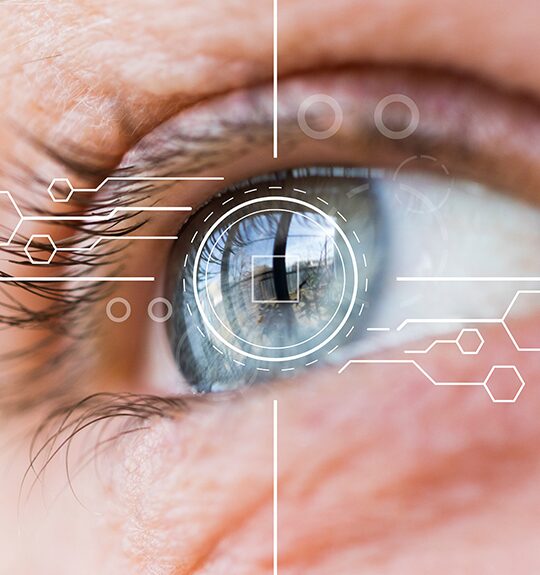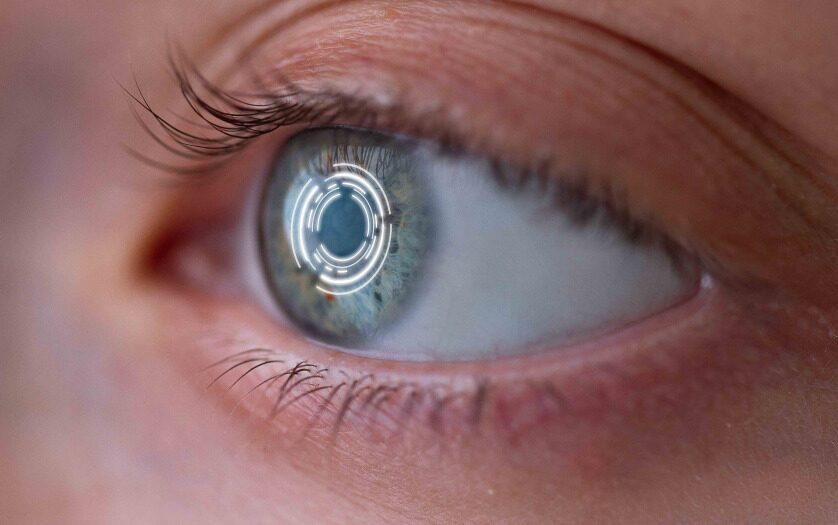
Imagine living in a world shrouded in perpetual darkness, where colors are whispers and faces, blurred abstractions. For millions around the globe, this chilling reality defines their existence – the burden of blindness. But what if we told you this reality is on the precipice of being rewritten? This isn’t science fiction; it’s the burgeoning frontier of a technological revolution: How Technology Cured Blindness, no scalpel required.
For centuries, the idea of restoring sight without surgery was relegated to the realm of myths and fables. Yet, with the relentless march of innovation, the once impossible is becoming a tangible possibility. From bionic eyes to neural implants, a mesmerizing array of tech is painting a brighter future for the visually impaired.
Bionic Eyes: A Window to the World

Spearheading this revolution are bionic eyes, miniature marvels of microelectronics mimicking the human retina. These tiny prosthetics, implanted behind the eye, capture light and translate it into electrical signals that the brain interprets as vision. Imagine slipping on a pair of high-tech sunglasses, and suddenly, fuzzy outlines sharpen into faces, landscapes unfurl in glorious detail, and the world explodes in a kaleidoscope of vibrant hues.
The journey isn’t perfect yet. Bionic vision isn’t a photorealistic copy of the world we see. It’s more like a mosaic, with limited resolution and color perception. But for individuals who have never experienced sight, even this fragmented glimpse is a profound revelation. It’s the difference between navigating in pitch darkness and stumbling toward a dimly lit doorway – a monumental leap towards independence and inclusion.
Brainwaves that Paint a Picture
Beyond the bionic eye, another captivating technology is tapping into the brain’s own visual processing power. Neural implants bypass the damaged parts of the eye and stimulate the visual cortex directly, essentially decoding brain activity and piecing together a visual puzzle.
Think of it like teaching your brain a new language, where electrical pulses replace light as the vocabulary. While still in its nascent stages, neural implants hold immense promise, potentially offering a broader range of vision and even the ability to perceive color.
Beyond Sight: Augmenting Reality for All

This technological odyssey isn’t just about restoring lost sight; it’s about redefining what it means to see. Imagine a world where everyone wears smart glasses that not only augment reality but also bridge the gap between the sighted and the visually impaired.
These glasses could translate text into audible descriptions, overlay labels on objects, and even narrate the surrounding environment, creating a level playing field for individuals with varying visual abilities. It’s a vision of inclusion, where technology acts as a bridge, not a barrier, fostering empathy and understanding between all.
But is it a utopia or a Pandora’s Box?
While the prospect of a world free from blindness is undeniably exhilarating, ethical questions linger. Are we playing God by tinkering with the fundamental human experience? Could these technologies exacerbate existing inequalities, creating a digital divide between the “enhanced” and the “unenhanced”?
These are crucial conversations we must have, navigating the ethical landscape with both ambition and foresight. Ultimately, the goal isn’t to create a homogenous vision of the world, but to empower individuals with the tools to experience it in their own unique way.
A Dawn Beckons
The journey towards a future where blindness is not a sentence but a challenge overcome is fraught with hurdles, but the momentum is undeniable. With every scientific breakthrough, with every bionic eye blinking open to the world, a new dawn beckons. It’s a future where sight isn’t a privilege, but a right, accessible to all.
And remember, as we walk hand-in-hand with technology on this path, let’s not forget the human element. Let’s celebrate the resilience of the visually impaired, the brilliance of scientific minds, and the unwavering hope that guides us towards a brighter, more inclusive future.
Conclusion
The journey towards a world without blindness is a breathtaking odyssey, paved with the ingenuity of science and the indomitable spirit of the human kind. While bionic eyes and neural implants illuminate the path, it’s the human touch that guides them. Let’s embrace technology as a tool for empowerment and inclusivity, weaving a future where everyone, regardless of their visual abilities, can paint their own masterpiece on the canvas of life. Remember, the revolution isn’t just about seeing, but about being seen. As we step into this new dawn, hand in hand, let’s ensure it’s a future where everyone can experience the world in their own unique, vibrant way.
You Might Also Like…
- Animal Superpowers: Nature’s Marvels That Put Humans to Shame
- Five Ideal Places, Best Ideas For A Romantic Date
- The Technology That Determines World Power: Semiconductors
FAQs
Is bionic eye technology readily available?
While undergoing clinical trials and showing promising results, bionic eyes are still considered experimental and not widely available on the market.
Are these technologies affordable?
Currently, the cost of these technologies is significant, putting them out of reach for many individuals. Research and development efforts are focused on making them more accessible and cost-effective.
Do these technologies come with any risks?
As with any medical procedure, there are potential risks associated with bionic eyes and neural implants, such as infection and device malfunction. Ongoing research aims to mitigate these risks.
Will these technologies ever restore perfect vision?
While achieving the same level of detail and acuity as human sight is a long-term goal, current technologies offer significant improvements in visual perception for individuals with blindness.
What can I do to make my own environment more accessible?
Simple steps like using clear and concise language, providing audio descriptions of visual information, and offering alternative ways to access information can make a big difference.


